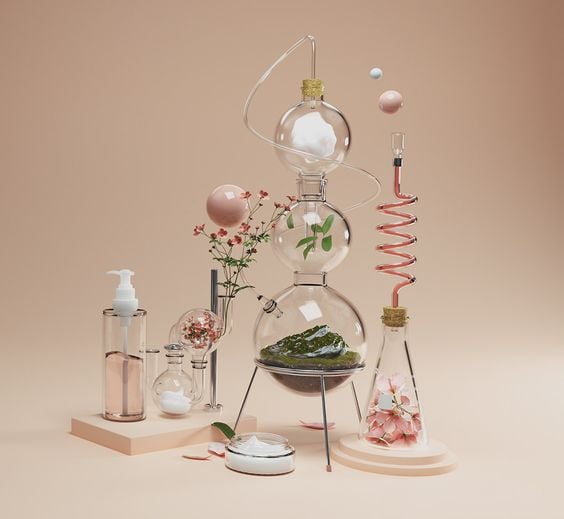Perfume is an essential element in the daily care routine, as it is a mixture of essential oils, scent compounds, and solvents that are used to provide a pleasant scent for the body, clothes, or living spaces. Natural scents are the essence of the perfume industry, as perfumes are extracted from nature through various techniques. In this article, we will discover Methods of perfume extraction techniques used to extract and transform natural scents into perfumes.
Methods and techniques of extraction of perfumes and essential oils
Essential oil extraction techniques
Essential oils are a vital ingredient in perfumes. These oils are extracted from plants, flowers, fruits and woods using different techniques. Steam distillation is one of the most common methods of extracting essential oils. In this technique, the plant material is placed in a distillation chamber, and steam is passed through it. The steam helps break down the plant material and release the essential oils, which are then collected in a separate container.
Methods of perfume extraction techniques

Solvent extraction
In this method, a solvent such as hexane or ethanol is used to extract the essential oils from the plant material and then the solvent evaporates, leaving the essential oils behind.
Enfleurage technology
It is a technique used to extract essential oils from delicate flowers such as jasmine and tuberose. In this method, flower petals are placed on a layer of fat to absorb essential oils. The fat is then washed with alcohol to extract the oils, leaving behind an aromatic tincture.
steam distillation
Steam distillation is one of the most common methods of extracting essential oils from plants. It involves heating the plant material and passing steam through it to break down the essential oils. Then the steam is condensed and the essential oils are collected in a separate container. This method is particularly useful for extracting essential oils from plants that are sensitive or sensitive to high temperatures.
Fractional distillation
It is a method of fragrance extraction techniques used to extract scent compounds from natural sources. It involves heating the natural source material and passing the vapors through a fractionation column. The column contains many trays or packing materials that allow different odor compounds to be separated based on their boiling points. This method is particularly useful for extracting aroma compounds that have similar boiling points. Read also: Modern perfume design techniques
Once the essential oils and aroma compounds have been extracted, they are blended together to produce the final fragrance. The exact composition of the perfume depends on the desired fragrance and the base materials used. Where the perfume usually consists of three ingredients: top notes, middle notes, and base notes. We will learn about it in the next lines.
perfume ingredients
top ingredients
They are the initial scents that you smell when you first spray or wear a perfume. They are usually light and refreshing, and are designed to provide a quick burst of fragrance that catches your eye. Examples of top notes are citrus, fruity and floral notes. These notes are the most volatile and evaporate quickly, usually within the first 10-15 minutes of use. Some of the popular top notes include bergamot, lemon, lavender, and grapefruit.
middle components
Also known as the heart of perfume, it is the heart of the fragrance. It usually appears a few minutes after the top notes have evaporated and lasts for several hours. Middle notes are responsible for the overall character of the scent and often consist of floral or spicy notes. Examples of heart notes are rose, jasmine, cinnamon, and nutmeg.
Basic ingredients
It is the base of the fragrance and provides a long lasting scent. They are usually heavier and more intense than the other two types of notes, and help solidify the scent on your skin. Base notes usually appear after several hours of use and can last for several days. Examples of base notes are musk, vanilla, sandalwood, and patchouli.
In conclusion, natural scents are the basis of the perfume industry. Extracting them and turning them into perfumes requires a complex process where essential oils and aroma compounds are extracted using different fragrance extraction techniques such as steam distillation, fractional distillation, and once extracted, these components are blended together to create the final fragrance, which consists of the following ingredients: upper, middle and base.

